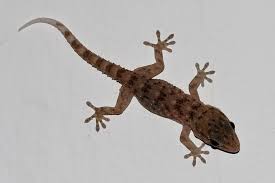
While Geckos are practically harmless to us, if they have been crawling in filthy areas, they can transfer that filth and bacteria into your home which can be concerning if they get into your kitchen. Geckos are a common pest that is found around residences and can actually be beneficial in a way as they eat bugs around the home. The problem occurs when they begin slipping their way indoors, crawling up walls, under appliances and leaving behind their droppings.
While Geckos are practically harmless to us, if they have been crawling in filthy areas, they can transfer that filth and bacteria into your home which can be concerning if they get into your kitchen. In the guide below, we will cover how you can identify a Gecko and control them using our expert advice and product recommendations.

Before you can move forward with a treatment approach, it is important to identify and be certain that you are dealing with a Gecko. Misidentification can lead to using the wrong treatment method, which could cost you money and time as a result.
- Geckos look and behave very similar to your average lizard because a gecko is classified as a type of lizard. This means that all geckos are lizards but not all lizards are geckos.
- Geckos have scaly skin, long tails that can detach and regrow and can change color to blend with their surroundings.
- The main difference between a common lizard and a common house gecko is that geckos do not have eyelids, therefore they cannot blink and have to lick their eye to clean them.
- Geckos have broad toes that are sticky on the ends which allow them to crawl up walls and cling to surfaces.
- Another big difference between geckos and lizards are geckos have a voice and can be noisy, making chirping type noises to communicate.
Use the description and image above to help you to determine whether the pest you are dealing with is a gecko. If you are not totally sure, contact us and we will have one of our experts assist you with identification.




